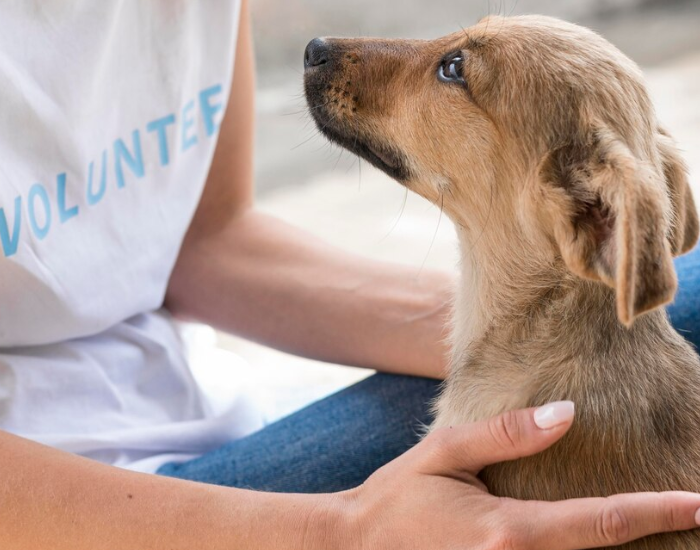- Understanding the Role and Requirements of an Anxiety Assistance Dog
- Step 1 - Determine Your Eligibility for an Anxiety Assistance Dog
- Step 2 - Registering an Anxiety Assistance Dog in the UK
- Step 3 - Selecting the Right Dog for Anxiety Assistance Training
- Step 4 - Training Your Anxiety Assistance Dog
- Self-Training vs. Professional Training Options
- Ensuring Ongoing Success and Support for Your Anxiety Assistance Dog
- Legal Rights and Public Access for Anxiety Assistance Dogs in the UK
- Conclusion: Achieving Confidence and Calm with Your Anxiety Assistance Dog
Anxiety assistance dogs have become invaluable companions for people managing anxiety disorders, providing essential support that enhances their quality of life. Unlike general emotional support animals, anxiety assistance dogs are specially trained to perform tasks that reduce anxiety symptoms, helping individuals regain independence, confidence, and stability in their daily lives. These dogs are more than pets; they are lifelines for people dealing with intense mental health challenges, such as panic disorders, social anxiety, and PTSD.
In the UK, having a registered and well-trained anxiety assistance dog offers both legal protections and practical benefits. This guide will walk you through the steps of registering and training an anxiety assistance dog, covering eligibility, necessary documentation, training processes, and resources to help you achieve a fulfilling partnership with your assistance dog.
Understanding the Role and Requirements of an Anxiety Assistance Dog
Difference Between Assistance, Therapy, and Emotional Support Dogs
It’s important to distinguish between assistance dogs, therapy dogs, and emotional support animals, as each plays a unique role. Anxiety assistance dogs are specially trained to perform tasks that directly support their handler’s mental health needs, including grounding during panic attacks or providing physical pressure for comfort. Therapy dogs often work in settings like hospitals or schools to comfort multiple individuals but are not trained to assist one specific handler. Emotional support animals (ESAs), on the other hand, provide general comfort without specialized training and are not granted the same public access rights as assistance dogs.
Understanding these distinctions is key to ensuring that your dog meets the standards and legal protections associated with assistance dogs in the UK.
Legal Rights for Assistance Dogs in the UK
In the UK, the Equality Act 2010 provides assistance dog handlers with public access rights, allowing them to bring their dogs into places typically restricted to pets, such as shops, restaurants, and public transportation. These rights ensure that assistance dog handlers have equal access to services and public spaces, but only if the dog meets the training and behavior standards expected of assistance animals.
Step 1 - Determine Your Eligibility for an Anxiety Assistance Dog
Who Qualifies for an Anxiety Assistance Dog?
To qualify for an anxiety assistance dog, individuals generally need a diagnosed anxiety disorder that significantly impacts daily life. Conditions that may qualify include:
• Generalized Anxiety Disorder (GAD)
• Panic Disorder
• Social Anxiety Disorder
• Post-Traumatic Stress Disorder (PTSD)
These conditions often involve symptoms like panic attacks, excessive worry, and difficulty coping in social settings—symptoms that an anxiety assistance dog can help alleviate through trained tasks and emotional grounding.
Documentation Requirements
To proceed with registering and training an anxiety assistance dog, it’s essential to obtain documentation from a licensed mental health professional. This letter should:
• Confirm the handler’s diagnosis
• Explain the limitations the anxiety disorder places on daily activities
• Verify that an assistance dog would provide meaningful support
This documentation is often required during the registration process and can help reinforce the need for an assistance dog when accessing public spaces.
Step 2 - Registering an Anxiety Assistance Dog in the UK
Is Registration Legally Required?
In the UK, assistance dog registration is not legally required, as the Equality Act 2010 protects the rights of assistance dog handlers without a formal registration process. However, many find that having identification or documentation can ease public access and clarify the dog’s role as an assistance animal.
Optional Registration Services
Services like UK Support Dog’s registration service provide optional ID cards and certifications, which can help validate the dog’s role in public spaces. Although not legally binding, these credentials serve as visual reassurance for business owners and the general public, simplifying interactions when entering establishments.
Benefits of Registering
While optional, registering an assistance dog with a reputable service can provide several benefits:
• Easier Public Access: Businesses may be more comfortable allowing entry if the dog has an ID card or vest.
• Validation of Dog’s Role: Registration helps verify that the dog is an assistance animal, especially in places unfamiliar with assistance dog laws.
• Increased Handler Confidence: Having identification provides peace of mind, helping handlers navigate public spaces with fewer obstacles.
Step 3 - Selecting the Right Dog for Anxiety Assistance Training
Key Characteristics of a Good Anxiety Assistance Dog
Selecting the right dog is crucial. Ideal anxiety assistance dogs generally possess the following qualities:
• Calm Temperament: A non-reactive and steady disposition is essential for managing the handler’s anxiety in various settings.
• Trainability: A willingness and eagerness to learn makes training smoother and more effective.
• Sensitivity to Emotional Cues: Dogs that are naturally attuned to their handler’s mood and body language are better able to provide support during anxiety episodes.
Recommended Breeds
While any dog with the right temperament and training can become an anxiety assistance dog, some breeds are more commonly used due to their gentle nature and responsiveness. Popular breeds for anxiety assistance include:
• Labrador Retrievers: Known for their calm demeanor and intelligence.
• Golden Retrievers: Friendly, reliable, and sensitive to emotional cues.
• Poodles: Highly trainable and adaptable, often a good choice for those needing a hypoallergenic dog.
• Cavalier King Charles Spaniels: Small, affectionate dogs that provide a comforting presence.
Assessment Process
If you already have a dog, consider whether it shows the traits needed for assistance work. Alternatively, consult a professional to assess your current dog’s suitability or to help you select a new dog that meets the necessary requirements.
Step 4 - Training Your Anxiety Assistance Dog
Basic Obedience Training
Importance of Obedience as a Foundation
Basic obedience forms the foundation of any assistance dog’s training. A dog must be able to reliably follow commands and behave appropriately in public spaces to qualify as an assistance dog.
Core Commands to Teach
• Sit
• Stay
• Come
• Down
• Leave it
• Heel
These commands ensure your dog behaves appropriately in a variety of settings, keeping you and those around you safe.
Socialization
Expose your dog to different environments, people, and sounds to ensure they remain calm and focused in any situation. Socialization helps reduce fear or anxiety in unfamiliar settings, ensuring the dog can support you wherever needed.
Task-Specific Training for Anxiety Support
Recognizing Signs of Anxiety or Panic
Teach the dog to recognize cues that indicate you are experiencing anxiety, such as pacing, tapping, or other specific gestures. Positive reinforcement and repetition help the dog associate these behaviors with a task to perform.
Interrupting Anxiety Episodes
Train the dog to interrupt anxiety episodes by performing specific tasks, such as nudging, pawing, or licking. This provides grounding and distracts you from anxious thoughts, helping to reduce symptoms quickly.
Deep Pressure Therapy
For many people with anxiety, deep pressure therapy is highly beneficial. Train your dog to apply gentle pressure by lying across your lap or leaning against you during moments of heightened anxiety, which helps to provide a calming effect.
Creating a Buffer in Crowded Situations
In crowded spaces, a buffer can be comforting. Train your dog to stand between you and others on command, creating a physical barrier and helping you feel more secure.
Public Access Training and Behavior
Introducing Public Spaces
Begin by training your dog in calm, low-distraction environments, such as a park during off-hours. Gradually progress to busier areas as the dog’s confidence and focus improve.
Reinforcing Focus and Calmness
In public, reinforce your dog’s focus on you, ignoring distractions. Use positive reinforcement techniques, such as treats or praise, to reward calm and attentive behavior.
Handler Etiquette
As the handler, remain calm and attentive. Your demeanor influences the dog’s behavior, so consistent calmness is key to helping your dog stay focused in public spaces.
Self-Training vs. Professional Training Options
Professional Training
Working with certified trainers or enrolling in a professional program can provide expert guidance on specific techniques and ensure your dog meets assistance dog standards.
Self-Training Assistance Dog For Anxiety
Self-training can be a fulfilling way to build a strong bond with your dog. It also offers flexibility, allowing you to train your dog for your specific anxiety-related needs. However, self-training requires dedication, patience, and consistency.
Service Dog Training School - Combine Professional Tutor with Self-Training
For those interested in self-training with professional support, Service Dog Training School offers online courses tailored to anxiety assistance dog training. These programs provide structured guidance, covering topics like obedience, task-specific training, and public access skills. Their flexible, comprehensive courses empower handlers to train at their own pace, with expert insights to support effective training.
Ensuring Ongoing Success and Support for Your Anxiety Assistance Dog
Consistent Training Reinforcement
Regularly reinforcing obedience and task-specific skills is essential to maintaining your dog’s training. Spend time each week practicing commands and tasks to keep your dog sharp.
Routine Vet Care and Health Maintenance
Regular vet check-ups, balanced nutrition, and sufficient exercise keep your dog healthy and ready to provide assistance. Preventative care is especially important for assistance dogs to ensure they are physically able to perform their tasks.
Refresher Courses or Additional Support
Consider refresher training sessions as your dog ages to maintain their skills and address any emerging behavioral issues. Professional refresher courses, whether online or in person, can help reinforce your dog’s obedience and task-specific training, ensuring they remain effective in their role as an assistance animal.
Building a Lifelong Bond
The relationship between you and your anxiety assistance dog is central to their effectiveness. Spend time engaging in positive interactions, such as play and relaxation, outside of training sessions. Strengthening this bond fosters trust and reliability, which enhances your dog’s responsiveness during moments of anxiety. This mutual connection ensures that your dog remains attuned to your needs and motivated to provide support.
Legal Rights and Public Access for Anxiety Assistance Dogs in the UK
Understanding Public Access Rights
In the UK, assistance dogs are legally permitted in most public spaces under the Equality Act 2010. This includes shops, restaurants, public transportation, and workplaces. These access rights ensure that handlers can rely on their assistance dogs in a variety of settings without facing discrimination.
Handler Responsibilities
Public access comes with responsibilities for the handler. Ensure your dog is well-behaved, quiet, and responsive to commands, as assistance dogs are expected to maintain high standards of conduct. Handlers are responsible for reinforcing this behavior and correcting any issues that may arise to preserve the positive image of assistance dogs in the community.
Displaying Identification
While assistance dog handlers are not legally required to have identification in the UK, displaying an optional ID card or vest can help clarify the dog’s role, making it easier to navigate public spaces. Identification from a recognized registration service, such as UK Support Dog, helps ensure smooth access and minimizes questions from businesses or the public.
Conclusion: Achieving Confidence and Calm with Your Anxiety Assistance Dog
An anxiety assistance dog can be transformative for individuals facing the daily challenges of an anxiety disorder. From providing grounding during panic attacks to creating a buffer in crowded spaces, these dogs offer consistent, practical support that enhances independence and mental well-being.
By following this guide, you can navigate each step of the process, from understanding eligibility and choosing the right dog to training, registering, and maintaining lifelong support with your anxiety assistance dog. Whether you choose to work with a professional trainer or pursue self-training with resources like those offered by Service Dog Training School, a well-trained assistance dog can become an invaluable companion in managing anxiety.
If you’re ready to take the first step, explore the registration options, training resources, and support available through uksupportdog.com. Starting your journey today can lead to a partnership that empowers you with calm, confidence, and the support you need to thrive.













